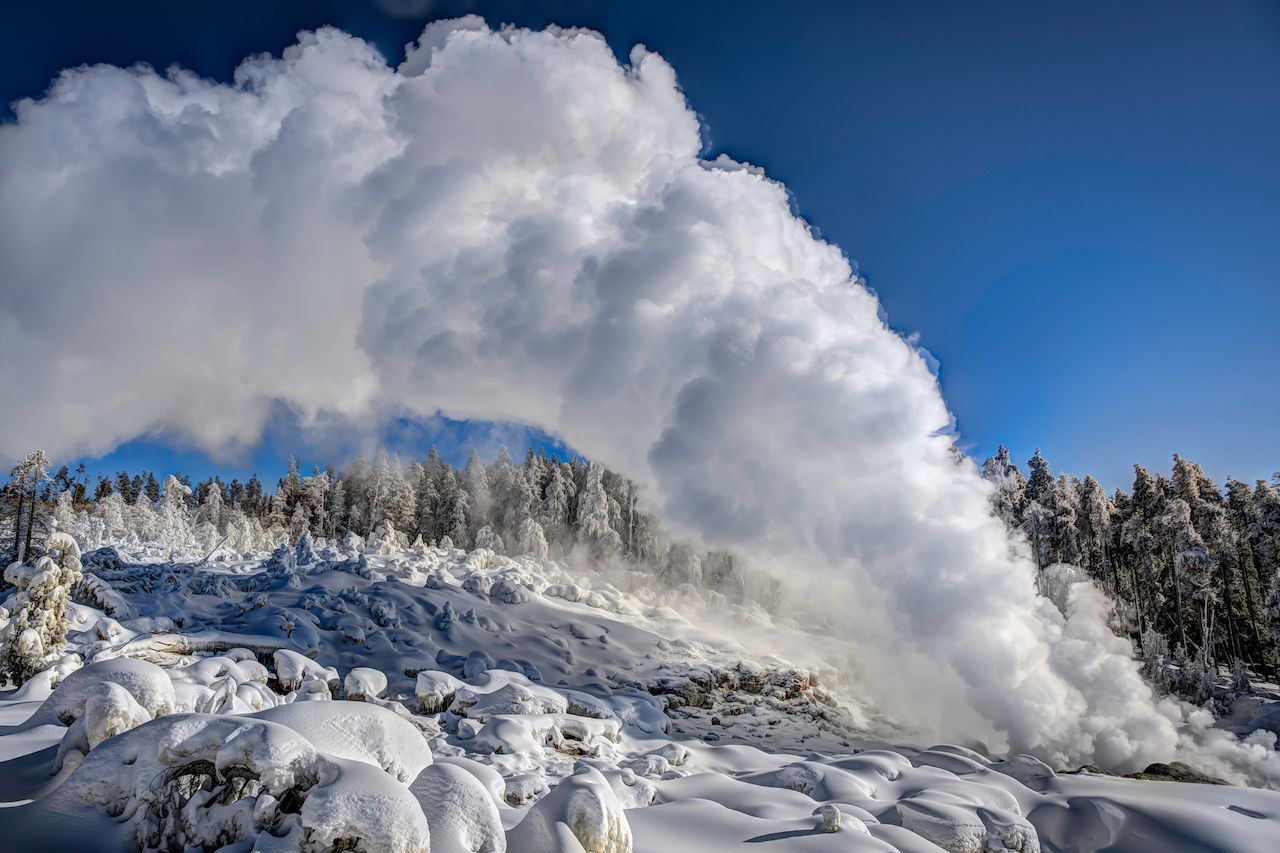Everyone stands in awe of geysers as they spout into the air, but what actually causes that sudden burst and why are some taller than others? A new study published in the Proceedings of the National Academy of Sciences has the answers, particularly with regard to the famous Steamboat Geyser in Yellowstone National Park.
There are more geysers in Yellowstone than anywhere else in the world. One of them, Steamboat Geyser, had been dormant until recently. Prior to 2015 it only erupted sporadically, and was completely silent for three years afterward. In March 2018, however, it began erupting once again — 109 times, to be exact, between March 2018 and July 2020.

